I was inspired by the sound sculptures of Harry Bertoia I saw at the Art Museum at Cornell in 1978 to try to make some myself. My materials (iron plates and welding rods) are more common than those he used, but my base designs are usually inspired by the representation theory of Lie algebras.
Here are some pictures and movies of my sculptures. The first two pictures show a 9-rod iron sculpture whose tops are all of different sizes, so when they chime, a large variety of tones is produced, but the motion dampens out fairly quickly since they all have different periods of motion. The rods are quite thin, only 1/16", and the tops are 5/16". I have a short (11 sec) movie (6.8MB) of this sculpture which you may download as an avi file.
Download avi recent file of movie here. Download Stuffit file of older movie here. Download avi file of older movie here.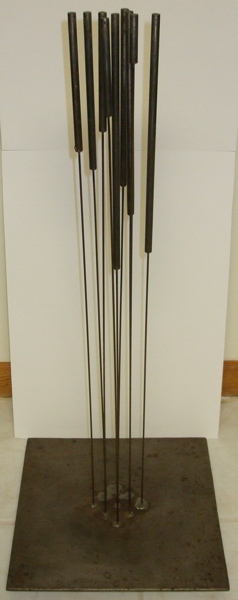
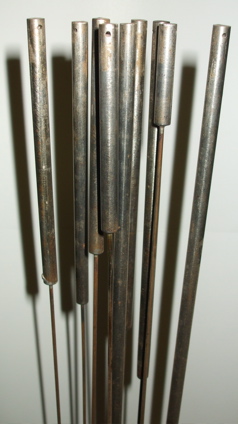
The next pictures show one of my oldest iron kinetic sculptures, a 7-rod hexagon pattern, also with thin rods and tops. I believe this one now resides in the home of Helaman Ferguson.
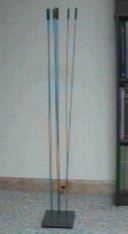
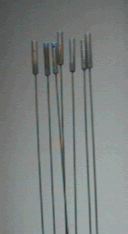
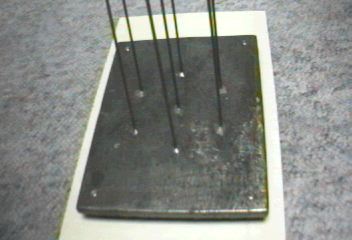
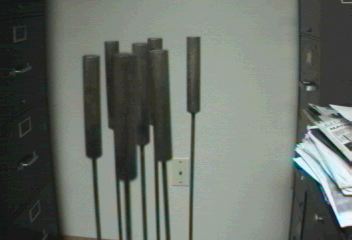
The next four pictures show one of my early attempts to make a kinetic sound sculpture, using a 12"x12" iron base and a square of 100 thin rods (1/16" with no tops). When viewed from the side, the eye does not quite know where to focus, and an optical illusion makes them seem to blur and be of uncertain distance. When all the rods are gathered together at the top by hand and then let go, their motion goes out and back into the center for some time, making a light chiming sound.
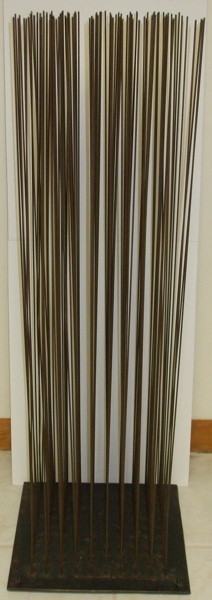
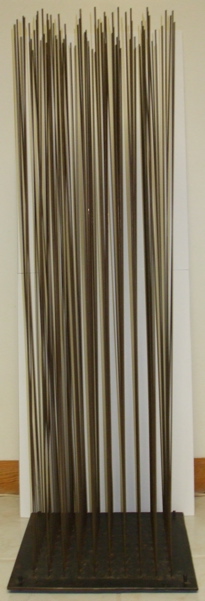
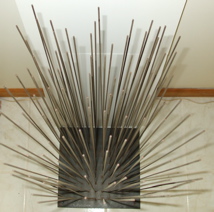
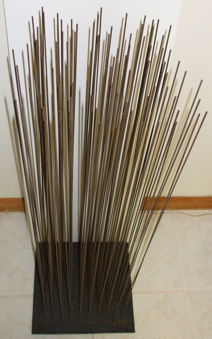
More recently I made a kinetic sound sculpture from silicon bronze, a material with a nicer look and good sound properties, but more expensive. These rods are one quarter of an inch in diameter, four feet tall, topped with cylinders three quarters of an inch in diameter and two inches long. The base is 6 inches by 8 inches, not large enough to make the tall sculpture stable, so I had to mount the base on a larger wooden base. The reverberation and depth of sound was, in fact, much better with the wooden base! I have below two still pictures, one of the top and one of the base, and two movies of the sculpture in motion.
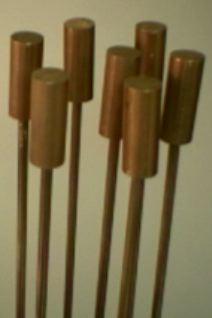
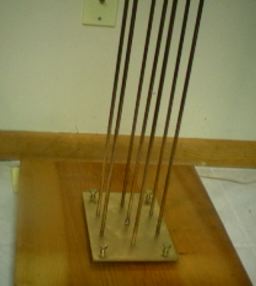
On August 22, 2005 I completed my largest kinetic sound sculpture, commissioned by a private collector in Chicago (reference available upon request). It is entirely made of silicon-bronze, consisting of twentyseven 1/4" x 48" rods each with a 1" x 4" cylindrical top, screwed into a 12" x 12" x 1/4" base plate. That base plate is attached to another base plate which is 24" x 24" x 1/8", for stability and additional reverberation. The plates are attached to each other by threaded bronze rods and hand-made hexagonal bronze nuts made from 3/4" rods. The larger base plate will be attached to a heavy base (concrete pedestal or wooden frame) by 3/8" bolts and hand-made hexagonal bronze nuts made from 1" rods. The pattern of the rods is the weight system of an irreducible representation of the simple Lie algebra sl(3) (type A_2) with highest weight 3L_1 + 4L_2. (Here, L_1 and L_2 denote the two fundamental weights of such a Lie algebra. A good reference for the mathematics behind this is ``Introduction to Lie Algebras and Representation Theory" by James E. Humphreys, Graduate Texts in Mathematics, Springer-Verlag, New York, Third Printing Revised 1980. See, in particular, a very similar weight diagram on page 115. A key feature of these weight systems is their Weyl group symmetry, and in the case of A_2 that gives a hexagonal symmetry because the Weyl group is the symmetric group S_3, the six symmetries of a triangle.
Below are six pictures of this kinetic sound sculpture, and one quicktime movie with sound. The movie would be 950 KB uncompressed, so it is gzipped for quicker transfer. Your browser should automatically decompress it, and most users should have no trouble viewing the quicktime file of type .mov.
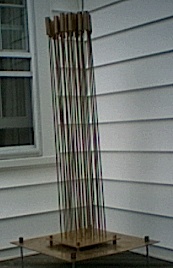
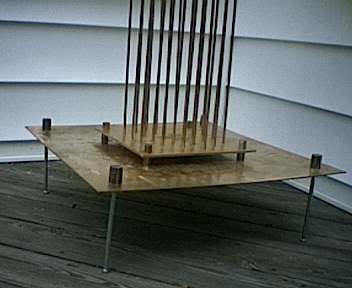

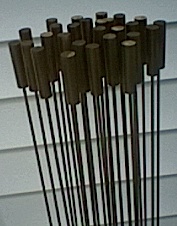
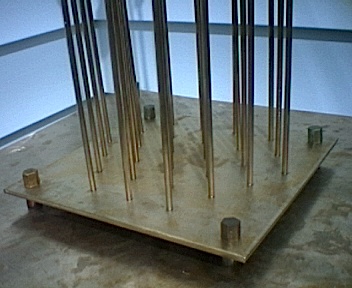
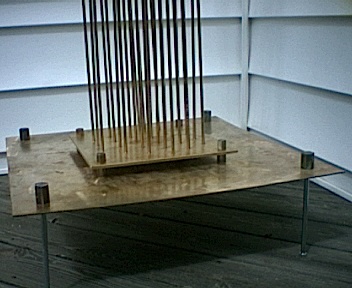
Here is a link to pictures showing how the sculpture looks installed in the garden of the new owner in Chicago.
On October 2, 2005 I completed another silicon-bronze kinetic sound sculpture with the 7-rod hexagon pattern the same as shown above, but with larger top cylinders 4" long and 1" in diameter, giving a much deeper richer sound. I also used a beautiful black walnut wood base bought from Pine Creek Wood Company. I believe the quality of the sound as well as the appearance are greatly enhanaced by this wood, and I plan to make more kinetic sound sculptures with different patterns of rods with this kind of base. Here are two pictures of the base of this sculpture.
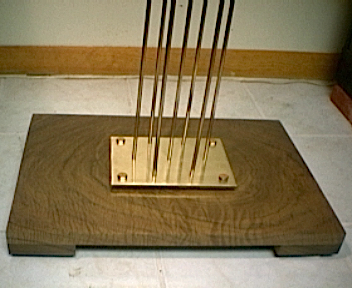
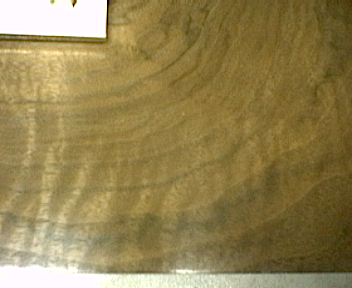
As part of my preparation for the large commissioned project described above, I made one 7-rod hexagon kinetic sound sculpture with base plate and rods of stainless steel. The rods were welded to the base, rather than threaded and screwed in, but I threaded the tops of the rods and attached 1"x3" steel rods to the tops. I used a simple pine wood base. The motion of the rods is faster than the bronze rod sculptures, and the sound tone quite different. Here are some pictures of it from different angles, and a quicktime movie of it (5.2 MB gzipped).
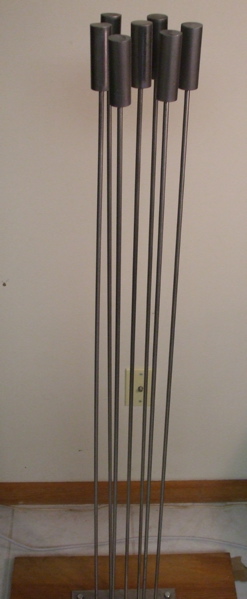
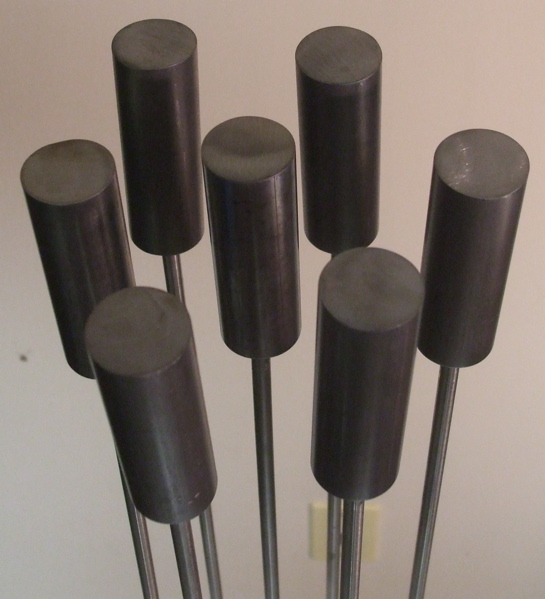
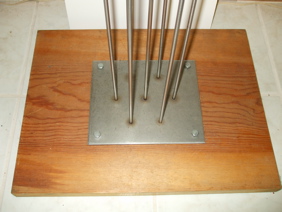
To see more types of sculpture I have tried, follow the following links:
Links back to:
Webpage of Alex Feingold,
Department of Mathematical Sciences,
Binghamton University.